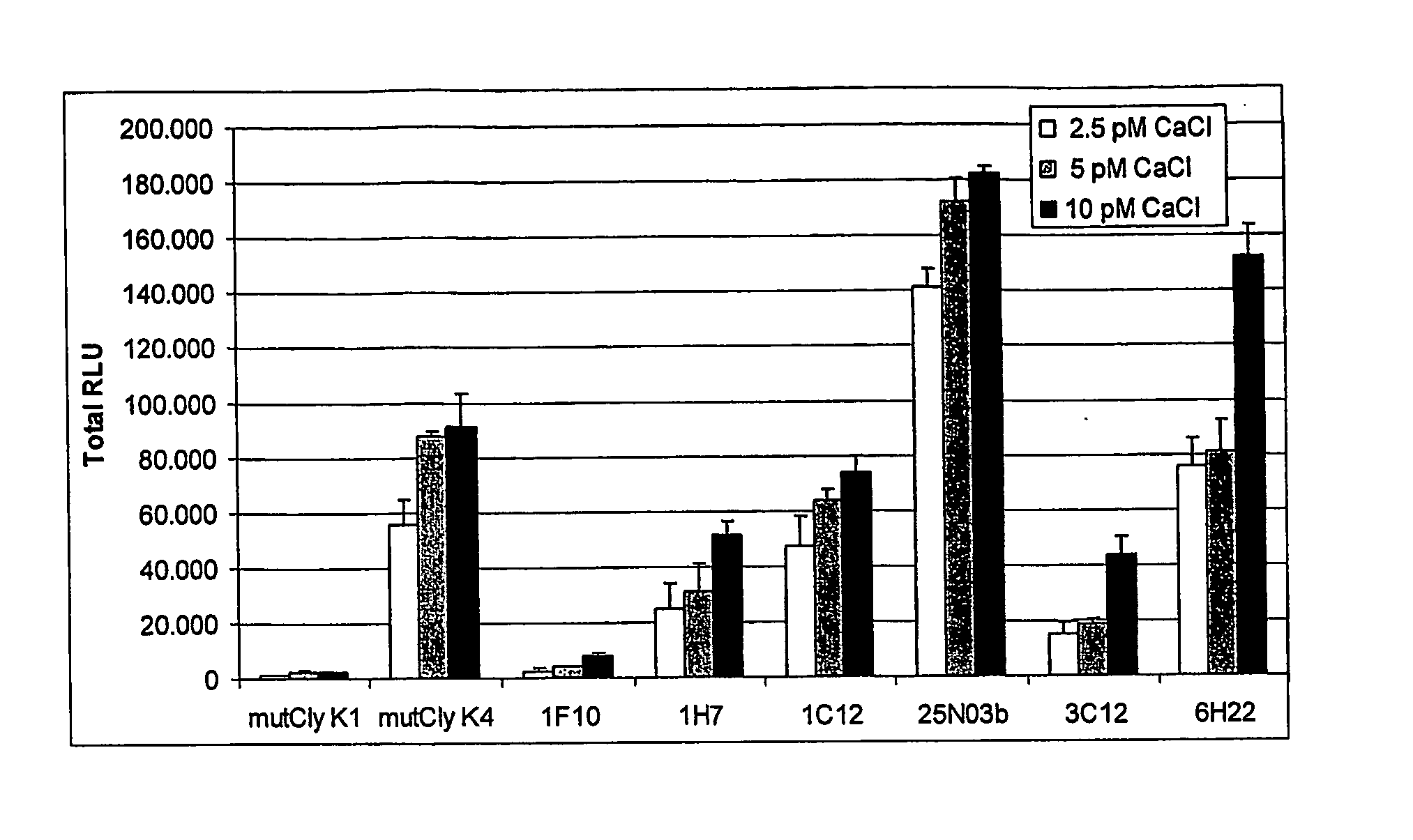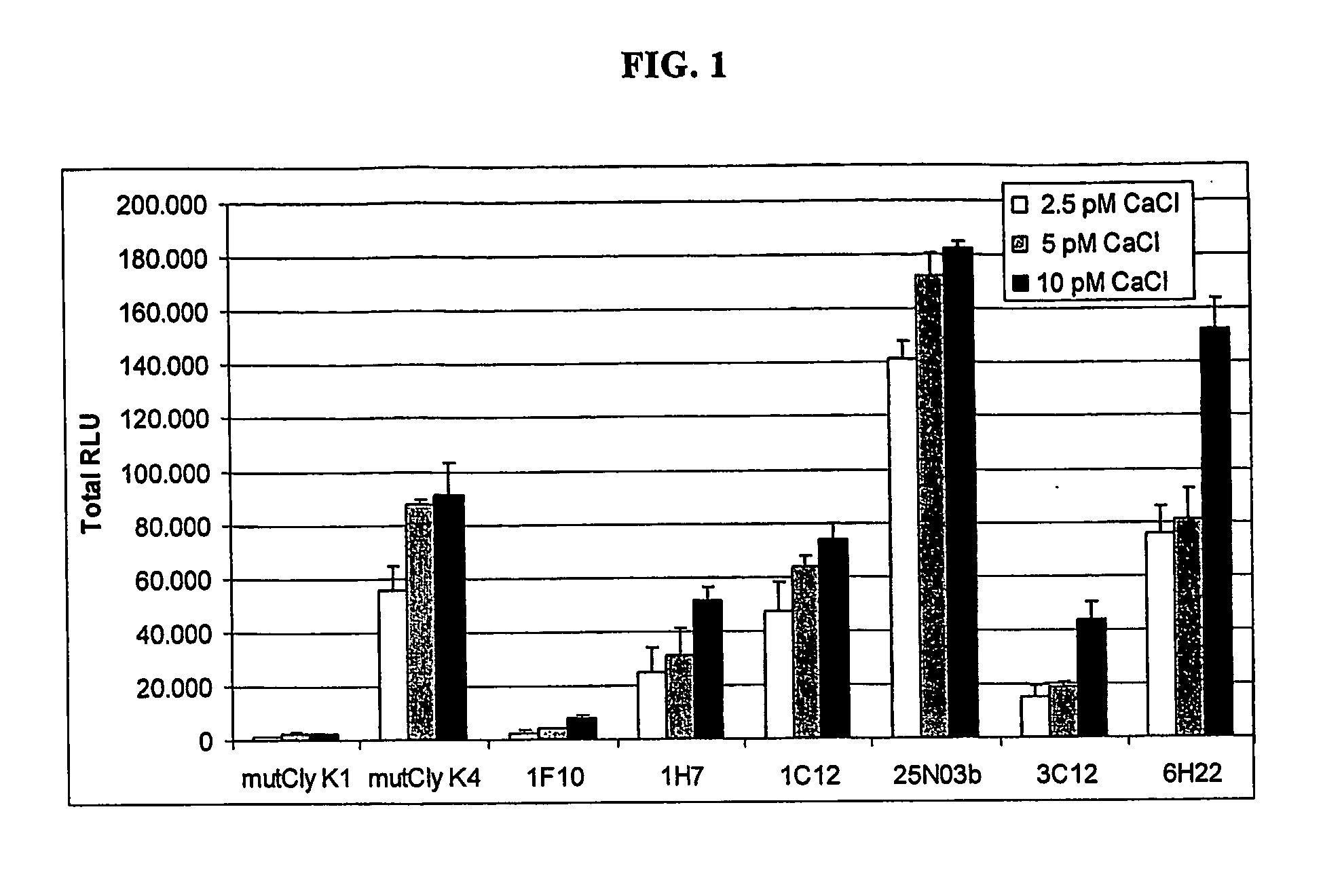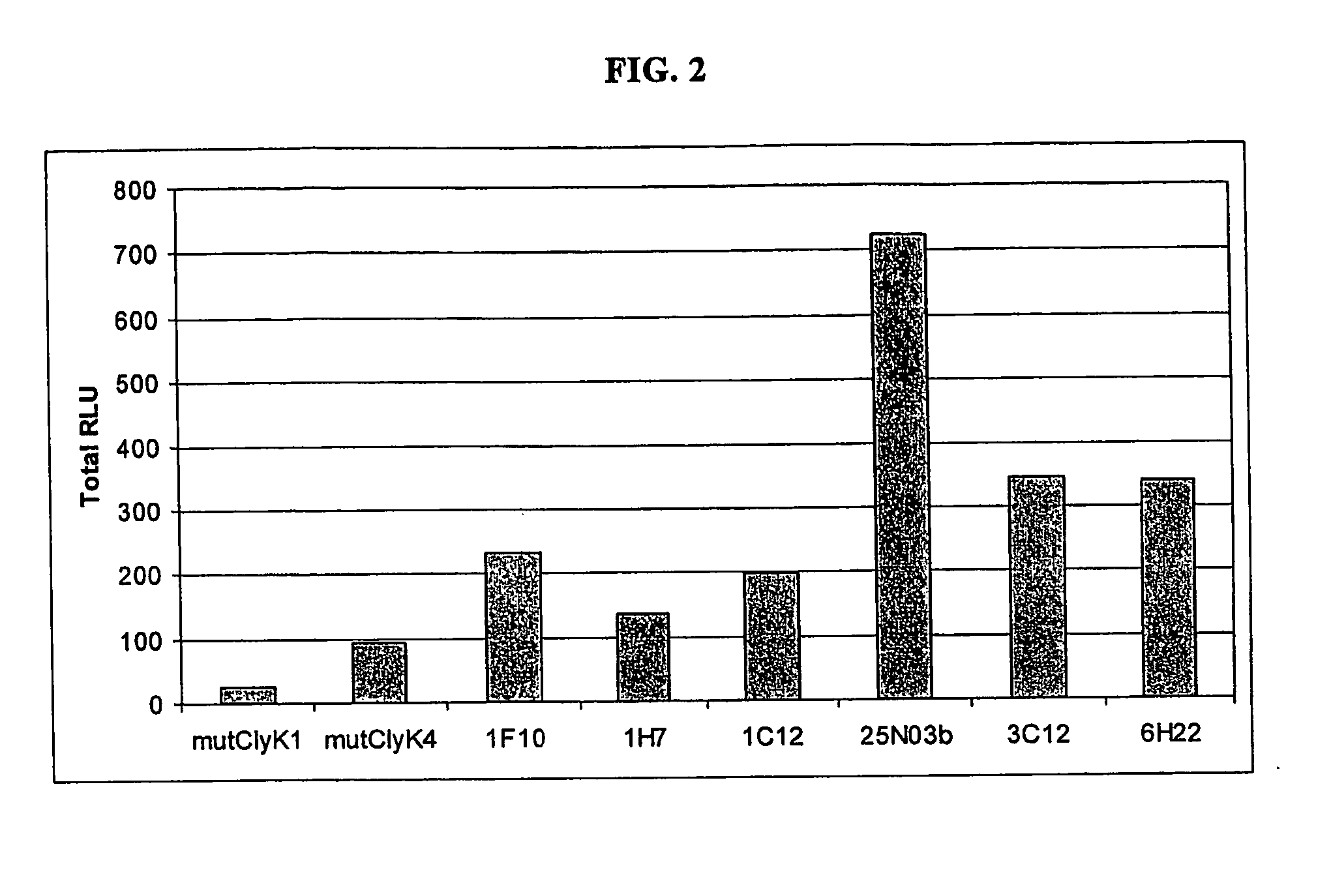Photoproteins With Enhanced Bioluminescence And Assays Using The Same
a bioluminescence and photoprotein technology, applied in the field of photoproteins with enhanced bioluminescence and assays using the same, can solve the problems that not much work has been done on this photoprotein, and achieve the effects of improving bioluminescence activity, enhancing bioluminescence performance, and enhancing bioluminescence performan
- Summary
- Abstract
- Description
- Claims
- Application Information
AI Technical Summary
Benefits of technology
Problems solved by technology
Method used
Image
Examples
Embodiment Construction
[0174] 1. Generation of a Randomly Mutagenized Library and Screening
[0175] The Random mutant Library was obtained by using the GeneMorph II Random Mutagenesis kit (Stratagene). In order to achieve a high mutation rate two different initial amounts of target DNA were used: 0.1 ng and 0.01 ng. A total of 83305 bacterial colonies were tested for luminescence activity. Of these, 1089 were positive and therefore had bioluminescent characteristics. The best colonies were picked, for a total of 289 colonies, and of these, 16 resulted best after a re-test. Finally 9 colonies were chosen and analysed.
[0176]FIG. 1 shows the results obtained in a three test-point CaCl2 dose-response curve obtained with the 8 mutants.
[0177] 2. Photoprotein Assay
[0178] 5 μl of the translation mixture were directly mixed with 95 μl of PBS solution in a 96 well plate which was mounted into the Luminometer (Berthold). To trigger photoprotein light emission, a 5 μM CaCl2 solution was injected into the well and l...
PUM
| Property | Measurement | Unit |
|---|---|---|
| Fraction | aaaaa | aaaaa |
| Fraction | aaaaa | aaaaa |
| Fraction | aaaaa | aaaaa |
Abstract
Description
Claims
Application Information
 Login to View More
Login to View More - R&D
- Intellectual Property
- Life Sciences
- Materials
- Tech Scout
- Unparalleled Data Quality
- Higher Quality Content
- 60% Fewer Hallucinations
Browse by: Latest US Patents, China's latest patents, Technical Efficacy Thesaurus, Application Domain, Technology Topic, Popular Technical Reports.
© 2025 PatSnap. All rights reserved.Legal|Privacy policy|Modern Slavery Act Transparency Statement|Sitemap|About US| Contact US: help@patsnap.com



